VERSIÓN EN ESPAÑOL (click aquí)
La Ceiba de Cuba, un Mito o una Leyenda
Desde hace mucho tiempo me ha llamado la atención este gigantesco árbol, que se torna majestuoso ante mis ojos, en cualquier campo cubano y también en nuestros pueblos y ciudades. Salí en busca de ellos hace unos días y para mi sorpresa y sin caminar mucho solo alrededor de casa, en solo un kilómetro cuadrado, encontré varios de ellos. Todos imponentes y pródigos en follaje en todas direcciones, este árbol significa: vida, perpetuidad, grandeza, bondad, fuerza y unión. No existe en Cuba árbol más grande que él y como es tan coposo brinda una increíble sombra y aportando innumerables beneficios al medio ambiente. Excelente refugio para aves y animales y que decir de los usos que aportan sus frutos, sus flores y su madera. Aquí me detengo, pues entre los mitos y leyendas está el. No poderse talar es por lo que lo consideran, un “Árbol Sagrado” formando parte de los sistemas religiosos de los diferentes pueblos y culturas de nuestro continente. La ceiba es un árbol temido y a la vez venerado, imaginen que ni los huracanes que han azotado nuestra región han podido nunca derribarlos. Nadie se ha atreve a talar ni a quemar una Ceiba. Si hubiese que hacerlo se debe que pedir permiso en acto religioso a los Orishas, de lo contrario se dice que ésta toma venganza y castiga a quien se atreva. Muchas personas dejan ofrendas en sus troncos, como flores, miel, monedas, frutos y algún que otro animal, como parte de ritos yorubas que en el argot popular se les conoce como limpiezas. Se dice que todos los muertos la habitan. Muchas personas les temen y evitan acercarse a ellas por este motivo. Precisamente en mi recorrido recordé que una Ceiba ubicada justo detrás de una parada de ómnibus se le había desprendido una de sus ramas y la había destruido justo a escasos segundos de que el ómnibus había recogido a las personas que allí esperaban. Sería esto algo casual o la Ceiba pudo haberlos protegido como árbol sagrado que es. Quizás posee poderes sobrenaturales que le han sido atribuidos por la naturaleza. Pensemos y es cierto que sus raíces son tan profundas que están conectadas en lo profundo de la tierra, recibiendo durante miles de años su sabia y su energía. La energía de la tierra hace que exista la vida. Se pueden destruir bosques enteros con el efecto de incendios y luego de un tiempo resurgen con la misma fuerza, vuelve la vida. Existe en Cuba una tradición muy arraigada por los habitantes de la Ciudad de La Habana, en víspera del 16 de noviembre. Ese día se conmemora la fundación de la Villa San Cristóbal de La Habana. Tanto los Habaneros como los extranjeros que nos visitan acuden a los festejos que se realizan en El Templete para esta ocasión, y existe una tradición ese día de pedir un deseo y dar 3 vueltas a la ceiba que allí esta plantada. Algunos depositan sus ofrendas al pie de ella. Con motivo de los 500 años de fundada la Villa de San Cristóbal de La Habana, y como dato curioso la ceiba que por muchos años allí existía fue sustituida por deterioro. Una más joven fue traída precisamente de Las Terrazas, una localidad que es reserva de la biosfera y perteneciente a nuestro municipio de Candelaria. Sobran razones para creer que este árbol es mito y a la vez leyenda. Estaba leyendo este libro del autor cubano Jesús Orta Ruíz, El Indio Naborí, y encontré una referencia a la Ceiba.
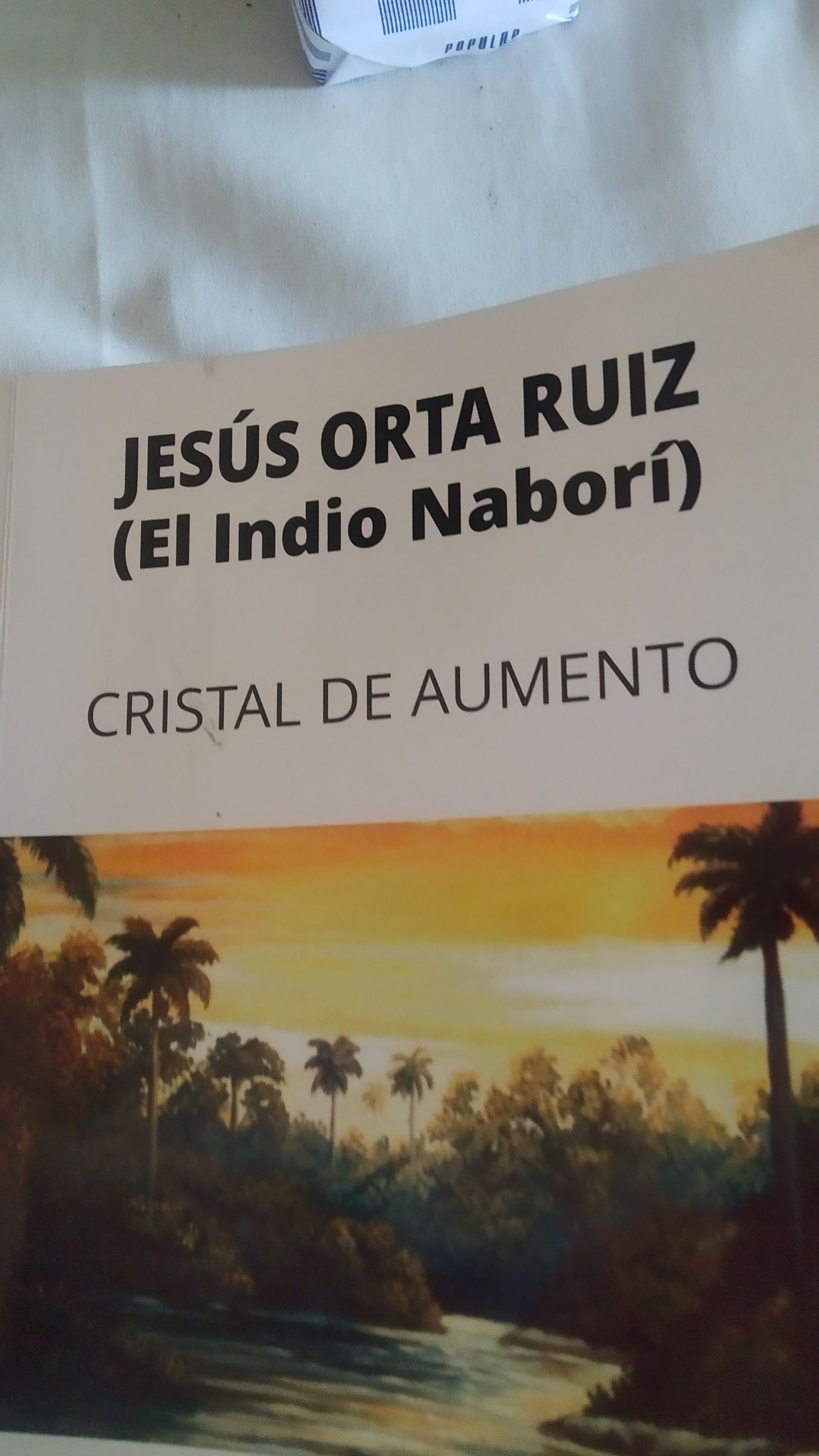
|
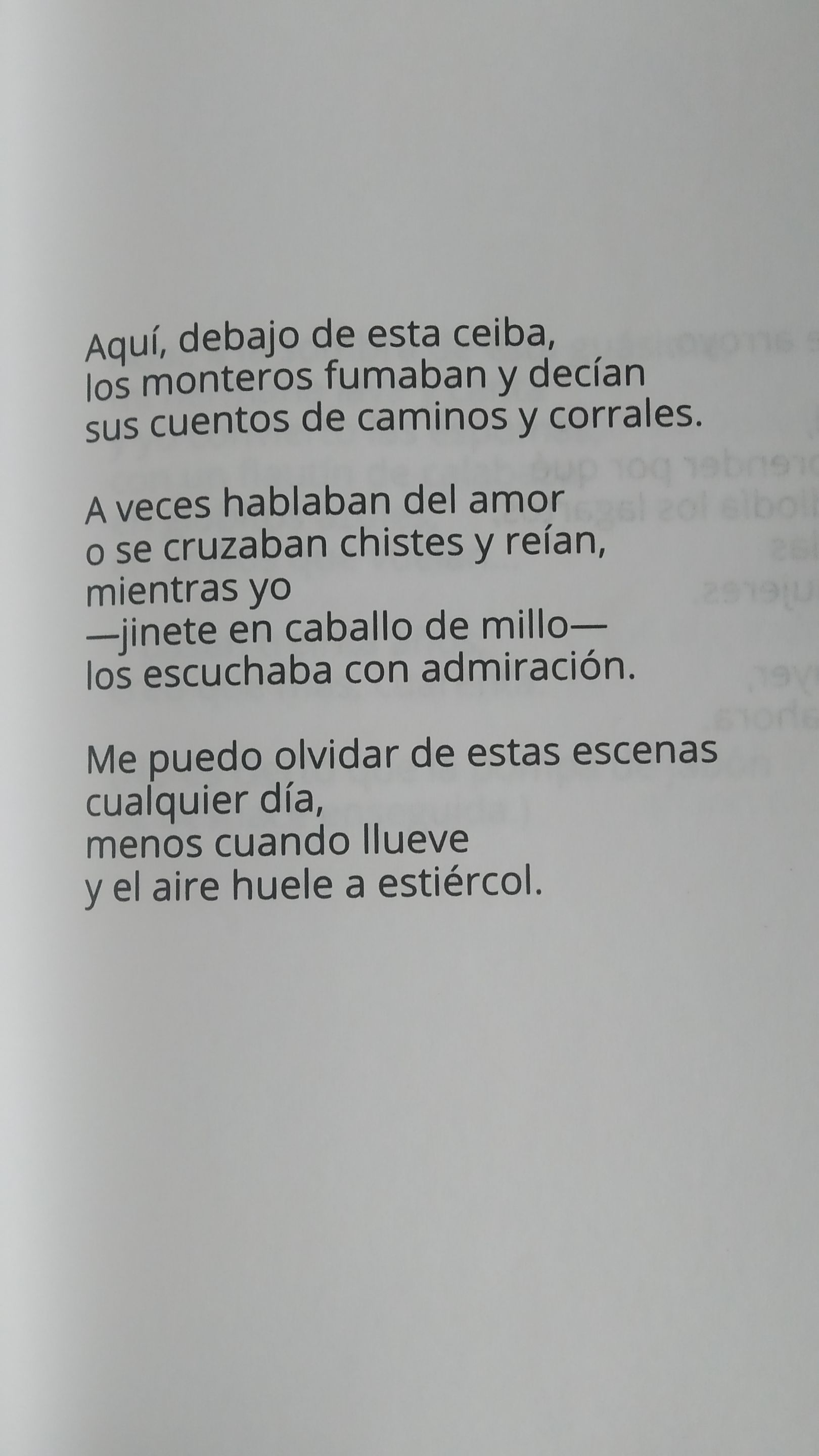
|
|---|
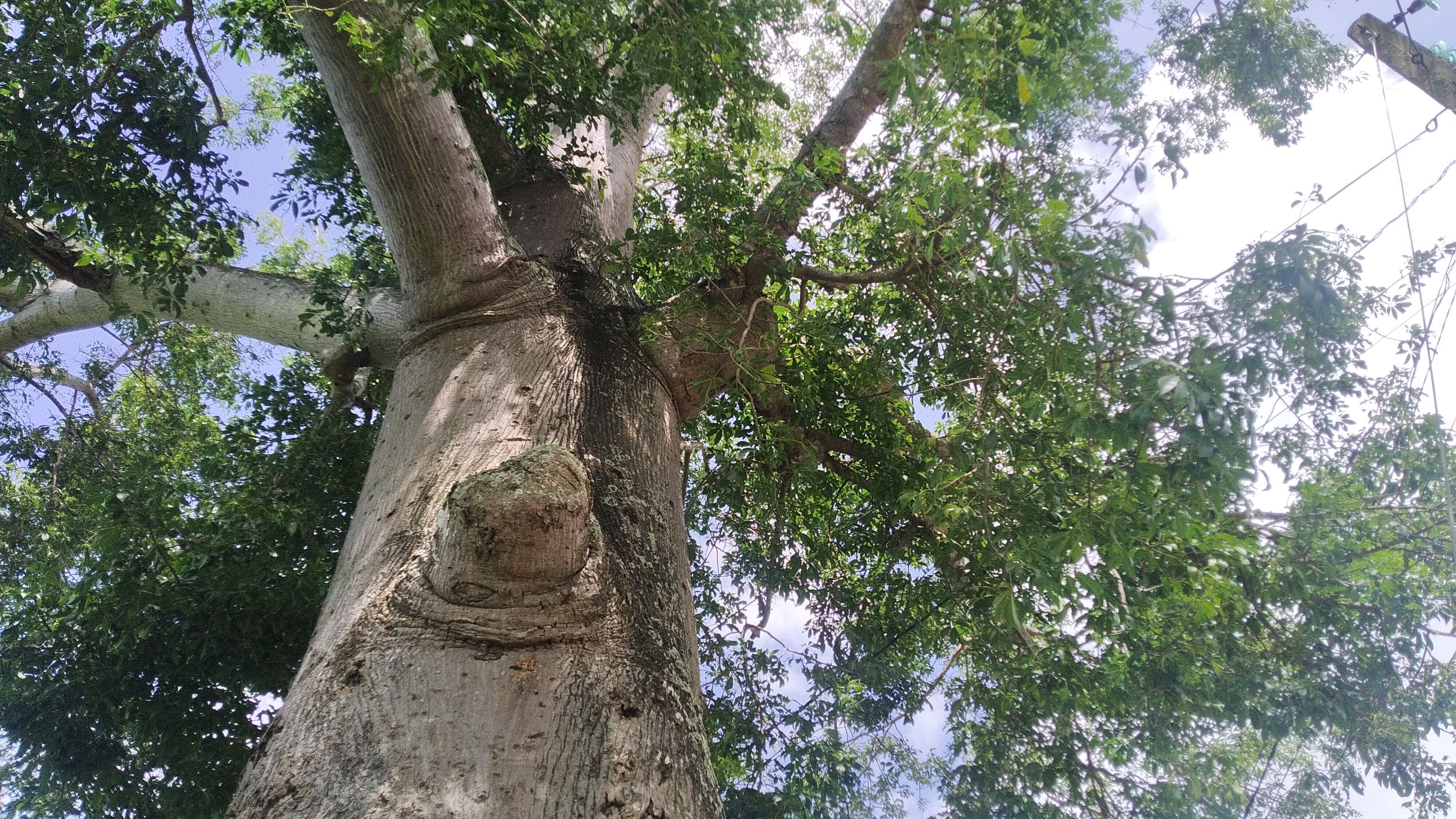 For a long time, I have been captivated by this gigantic tree, which stands majestic before my eyes, in any Cuban countryside and also in our towns and cities.
I set out in search of them a few days ago and to my surprise, without walking much, just around the house, in just one square kilometer, I found several of them.
For a long time, I have been captivated by this gigantic tree, which stands majestic before my eyes, in any Cuban countryside and also in our towns and cities.
I set out in search of them a few days ago and to my surprise, without walking much, just around the house, in just one square kilometer, I found several of them.
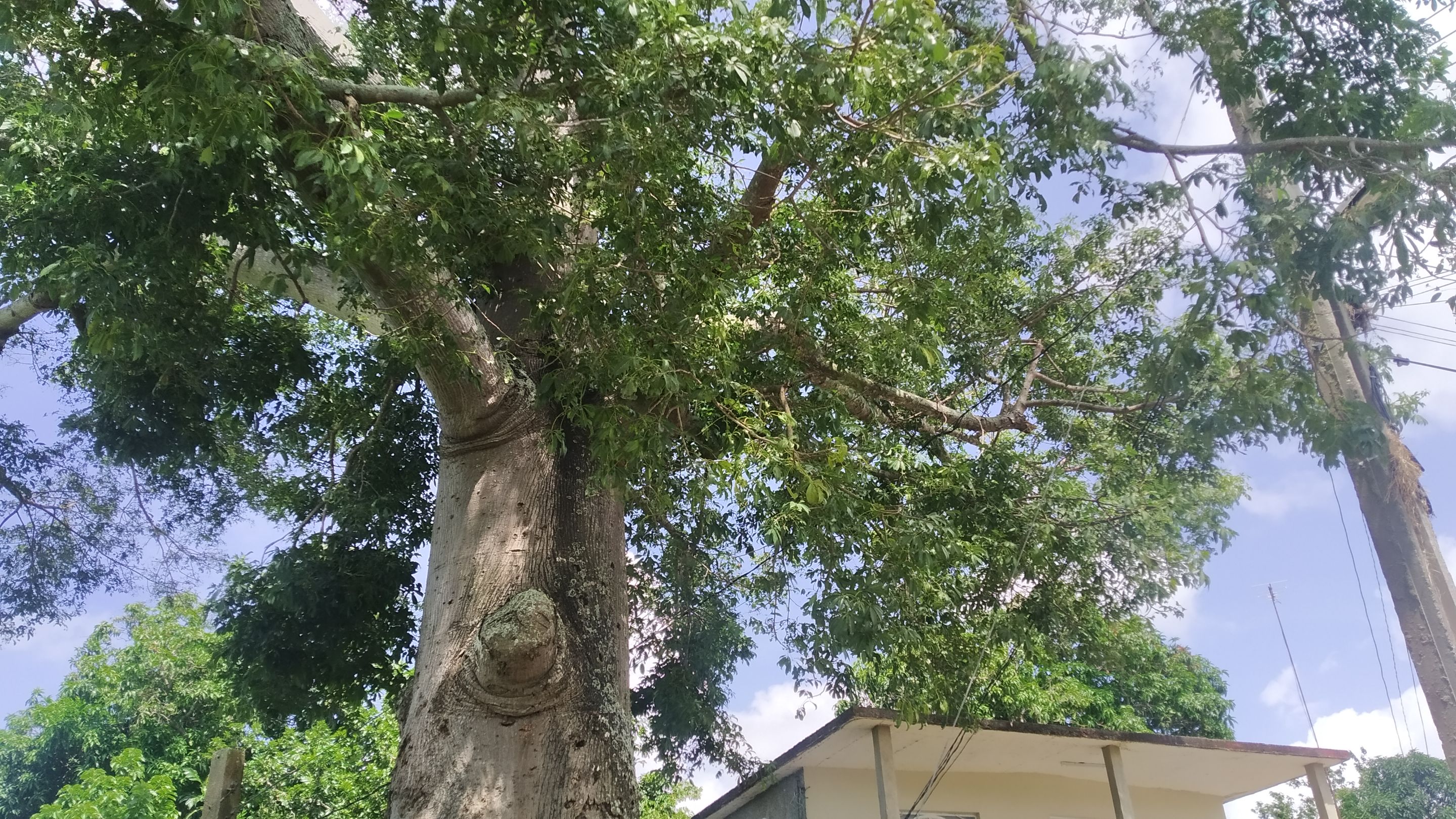
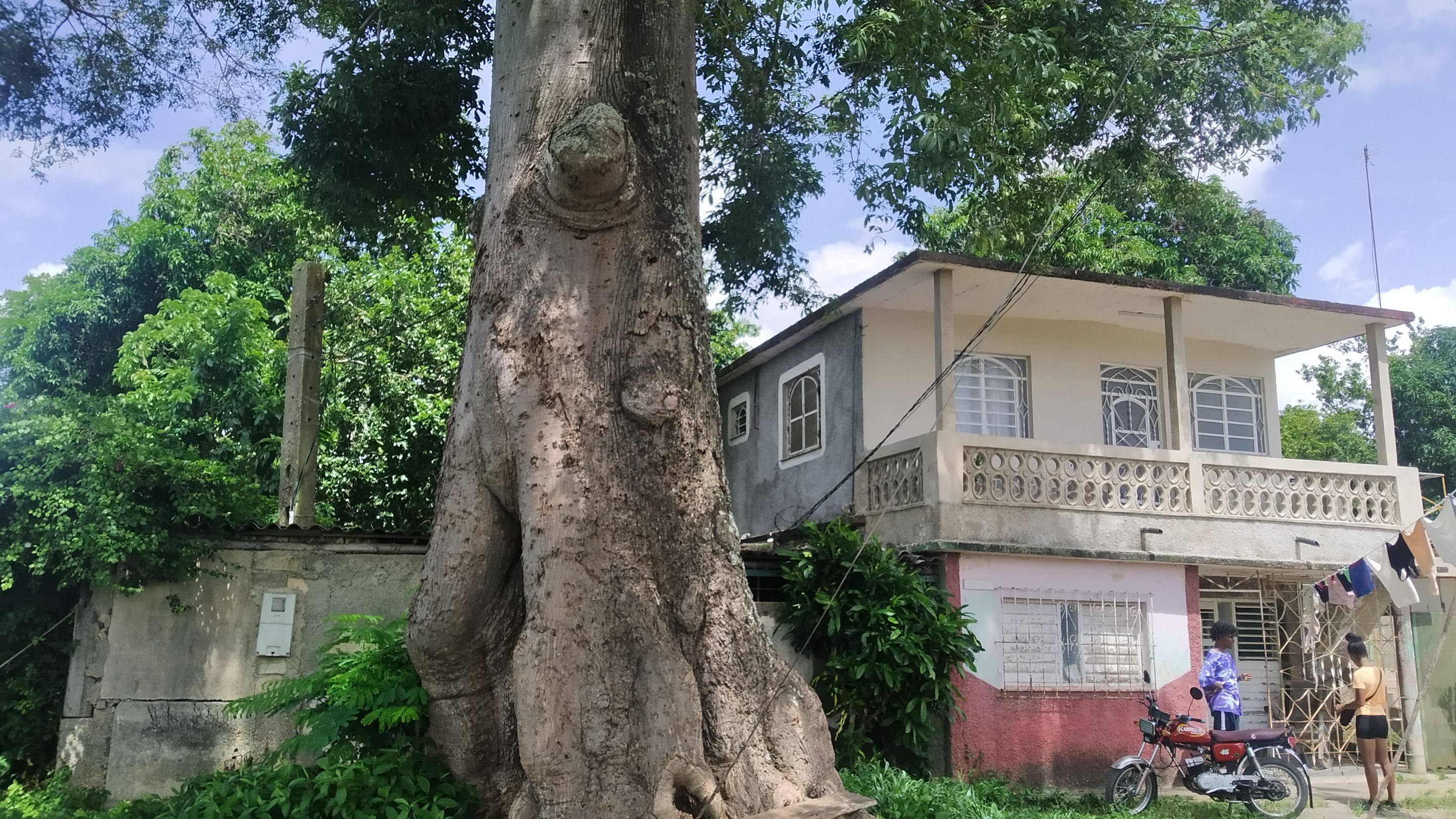 All imposing and lavish in foliage in all directions, this tree symbolizes: life, perpetuity, greatness, kindness, strength, and unity. There is no tree in Cuba larger than it, and since it is so lush, it provides incredible shade and countless benefits to the environment. An excellent refuge for birds and animals and not to mention the uses provided by its fruits, flowers, and wood. Here I stop, as among the myths and legends is it. Not being able to be felled is why it is considered a "Sacred Tree" forming part of the religious systems of the different peoples and cultures of our continent.
The ceiba is a tree feared and revered, imagine that not even the hurricanes that have struck our region have ever been able to bring them down.
All imposing and lavish in foliage in all directions, this tree symbolizes: life, perpetuity, greatness, kindness, strength, and unity. There is no tree in Cuba larger than it, and since it is so lush, it provides incredible shade and countless benefits to the environment. An excellent refuge for birds and animals and not to mention the uses provided by its fruits, flowers, and wood. Here I stop, as among the myths and legends is it. Not being able to be felled is why it is considered a "Sacred Tree" forming part of the religious systems of the different peoples and cultures of our continent.
The ceiba is a tree feared and revered, imagine that not even the hurricanes that have struck our region have ever been able to bring them down.
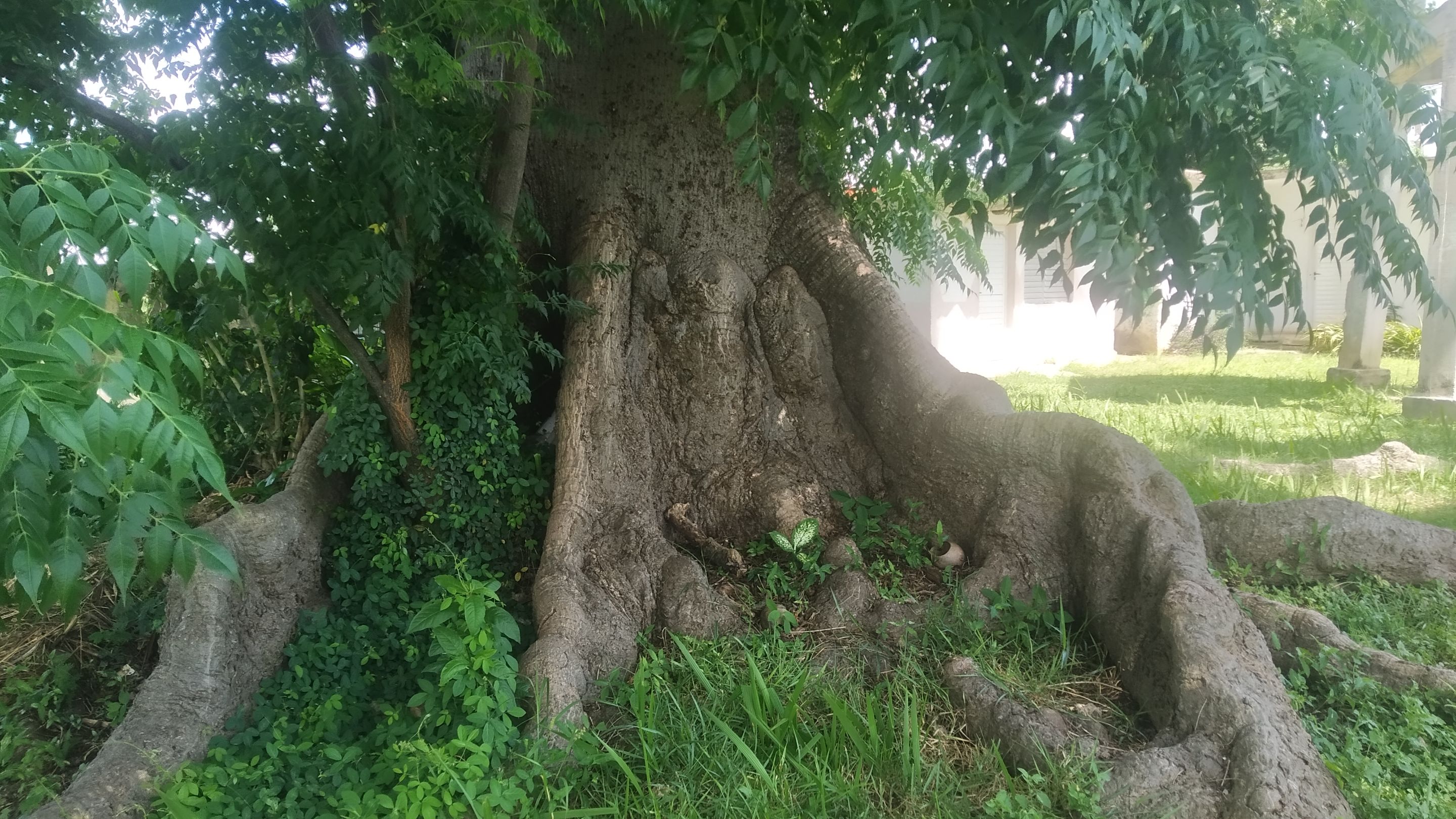 Nobody dares to cut down or burn a Ceiba. If it had to be done, permission must be requested in a religious ceremony to the Orishas, otherwise it is said that it takes revenge and punishes those who dare.
Nobody dares to cut down or burn a Ceiba. If it had to be done, permission must be requested in a religious ceremony to the Orishas, otherwise it is said that it takes revenge and punishes those who dare.
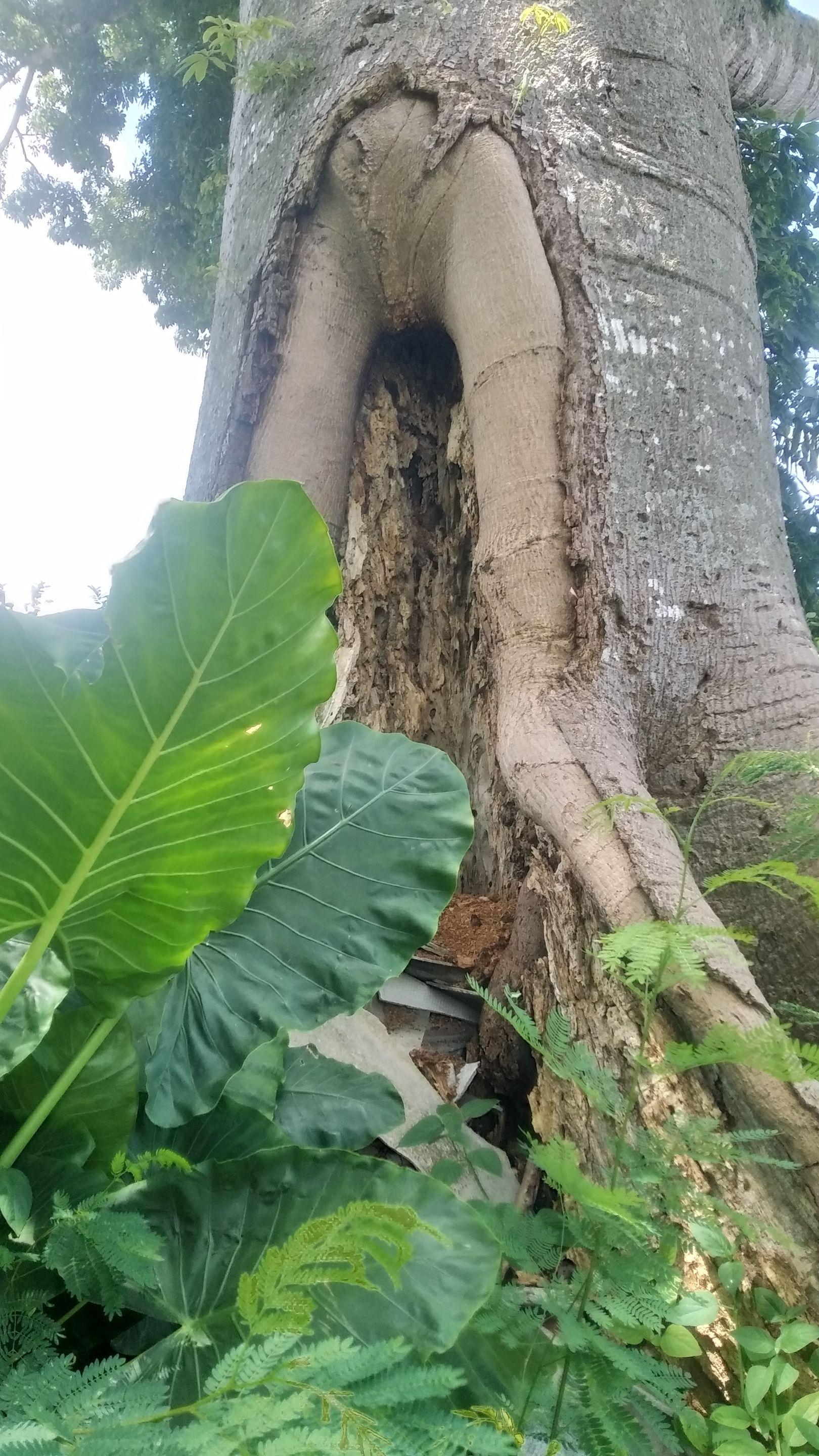 Many people leave offerings on its trunks, such as flowers, honey, coins, fruits, and the occasional animal, as part of Yoruba rites known in popular jargon as cleansings. It is said that all the dead inhabit it. Many people fear them and avoid approaching them for this reason.
Many people leave offerings on its trunks, such as flowers, honey, coins, fruits, and the occasional animal, as part of Yoruba rites known in popular jargon as cleansings. It is said that all the dead inhabit it. Many people fear them and avoid approaching them for this reason.
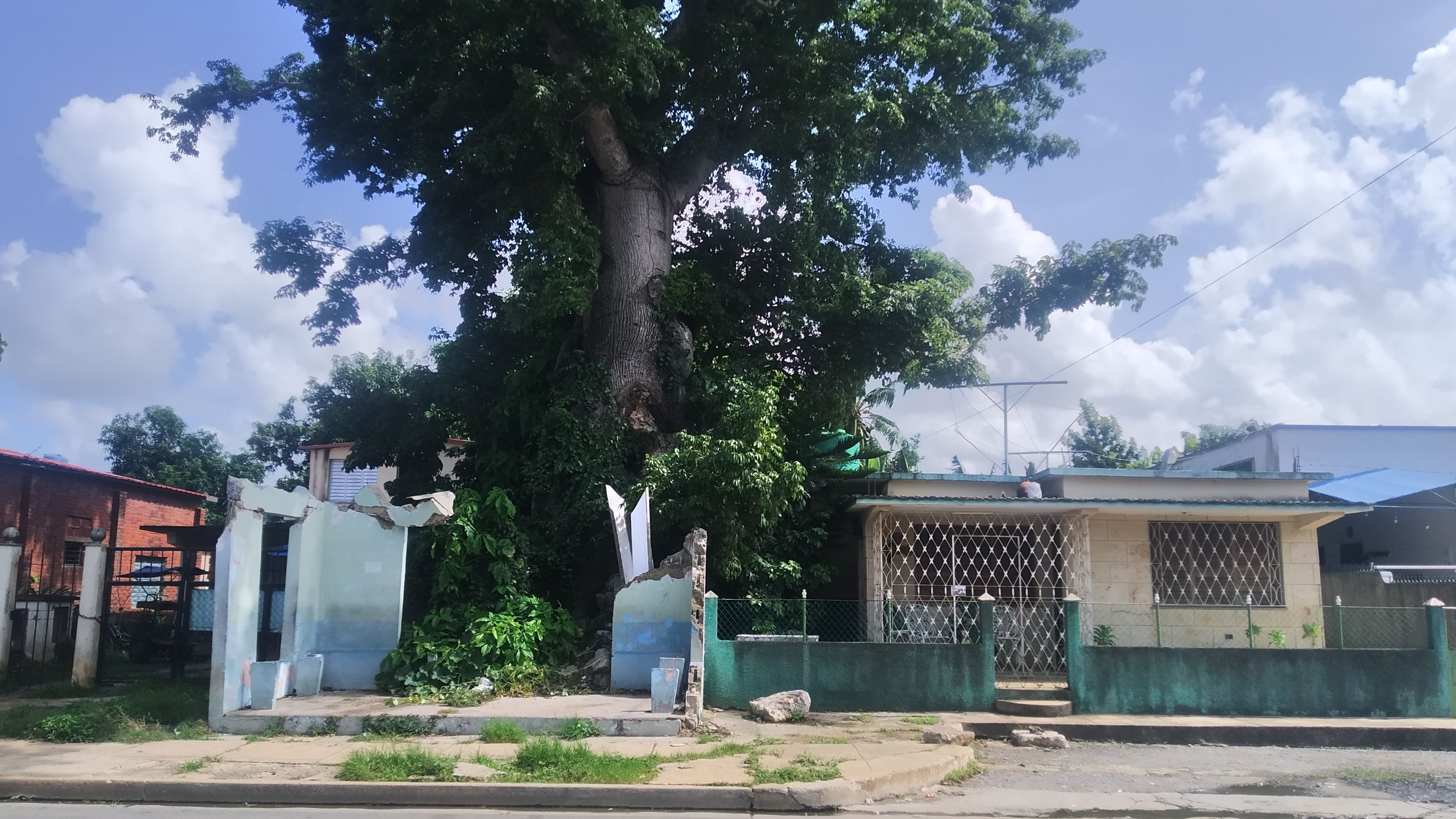 Precisely on my route, I remembered that a Ceiba located just behind a bus stop had shed one of its branches and had destroyed it just seconds after the bus had picked up the people waiting there. Could this be something casual or could the Ceiba have protected them as the sacred tree it is. Perhaps it possesses supernatural powers attributed to it by nature. Let's think, and it is true that its roots are so deep that they are connected deep in the earth, receiving its wisdom and energy for thousands of years. The earth's energy makes life possible. Entire forests can be destroyed by wildfires and then resurface with the same strength after a while, life returns.
Precisely on my route, I remembered that a Ceiba located just behind a bus stop had shed one of its branches and had destroyed it just seconds after the bus had picked up the people waiting there. Could this be something casual or could the Ceiba have protected them as the sacred tree it is. Perhaps it possesses supernatural powers attributed to it by nature. Let's think, and it is true that its roots are so deep that they are connected deep in the earth, receiving its wisdom and energy for thousands of years. The earth's energy makes life possible. Entire forests can be destroyed by wildfires and then resurface with the same strength after a while, life returns.
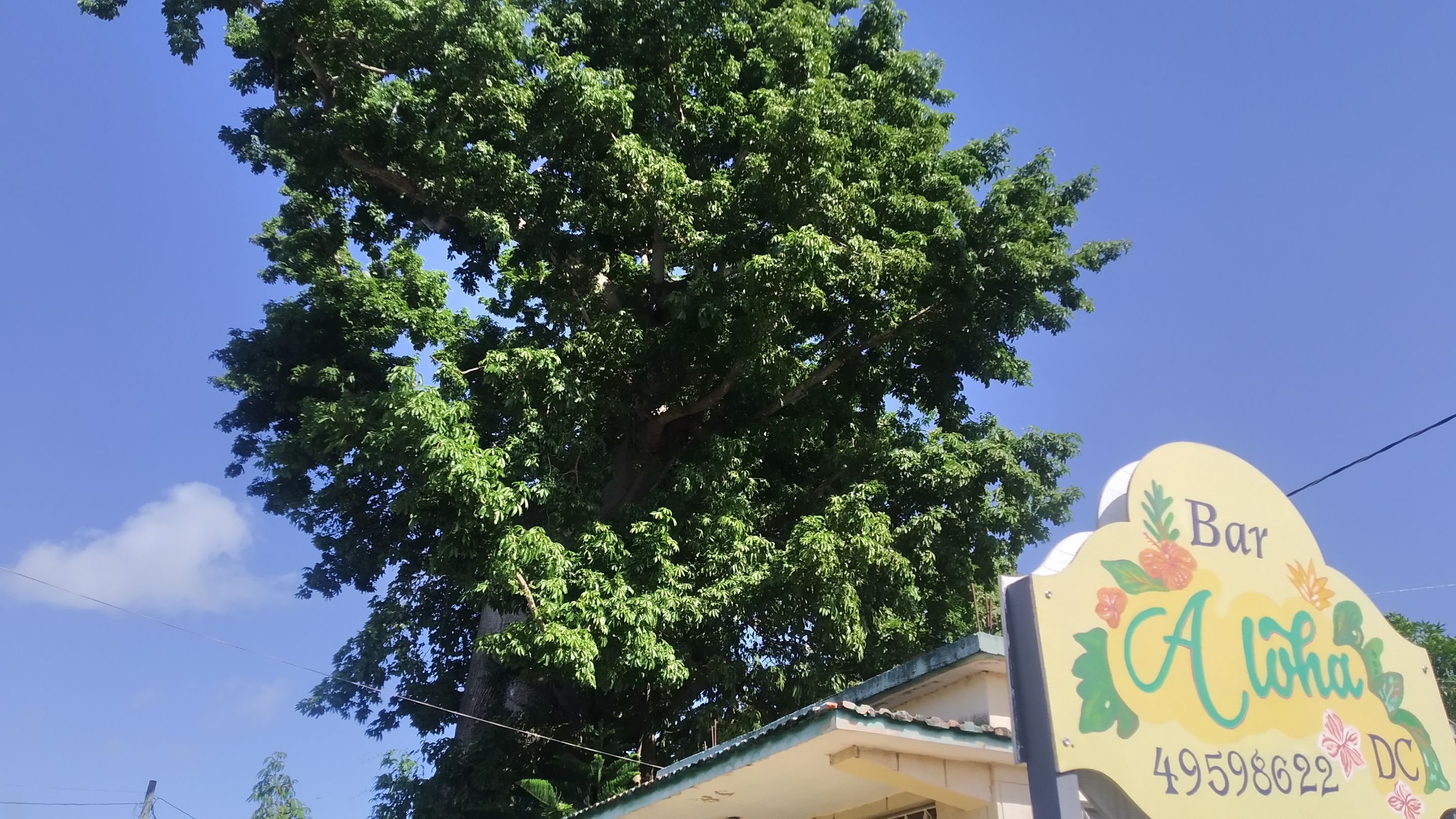 There is a deeply rooted tradition in the residents of the City of Havana, on the eve of November 16th. On that day the founding of the Villa San Cristóbal de La Habana is commemorated. Both Habaneros and foreigners who visit us attend the celebrations held at the Templete, an historical building, for this occasion, and there is a tradition on that day to make a wish and walk around the ceiba planted there three times. Some leave their offerings at its base.
In honor of the 500 years since the founding of the Villa de San Cristóbal de La Habana, and as a curious fact, the ceiba that had existed there for many years was replaced due to deterioration. A younger one was brought precisely from Las Terrazas, an area that is a biosphere reserve belonging to our municipality of Candelaria. There are plenty of reasons to believe that this tree is both myth and legend.
There is a deeply rooted tradition in the residents of the City of Havana, on the eve of November 16th. On that day the founding of the Villa San Cristóbal de La Habana is commemorated. Both Habaneros and foreigners who visit us attend the celebrations held at the Templete, an historical building, for this occasion, and there is a tradition on that day to make a wish and walk around the ceiba planted there three times. Some leave their offerings at its base.
In honor of the 500 years since the founding of the Villa de San Cristóbal de La Habana, and as a curious fact, the ceiba that had existed there for many years was replaced due to deterioration. A younger one was brought precisely from Las Terrazas, an area that is a biosphere reserve belonging to our municipality of Candelaria. There are plenty of reasons to believe that this tree is both myth and legend.
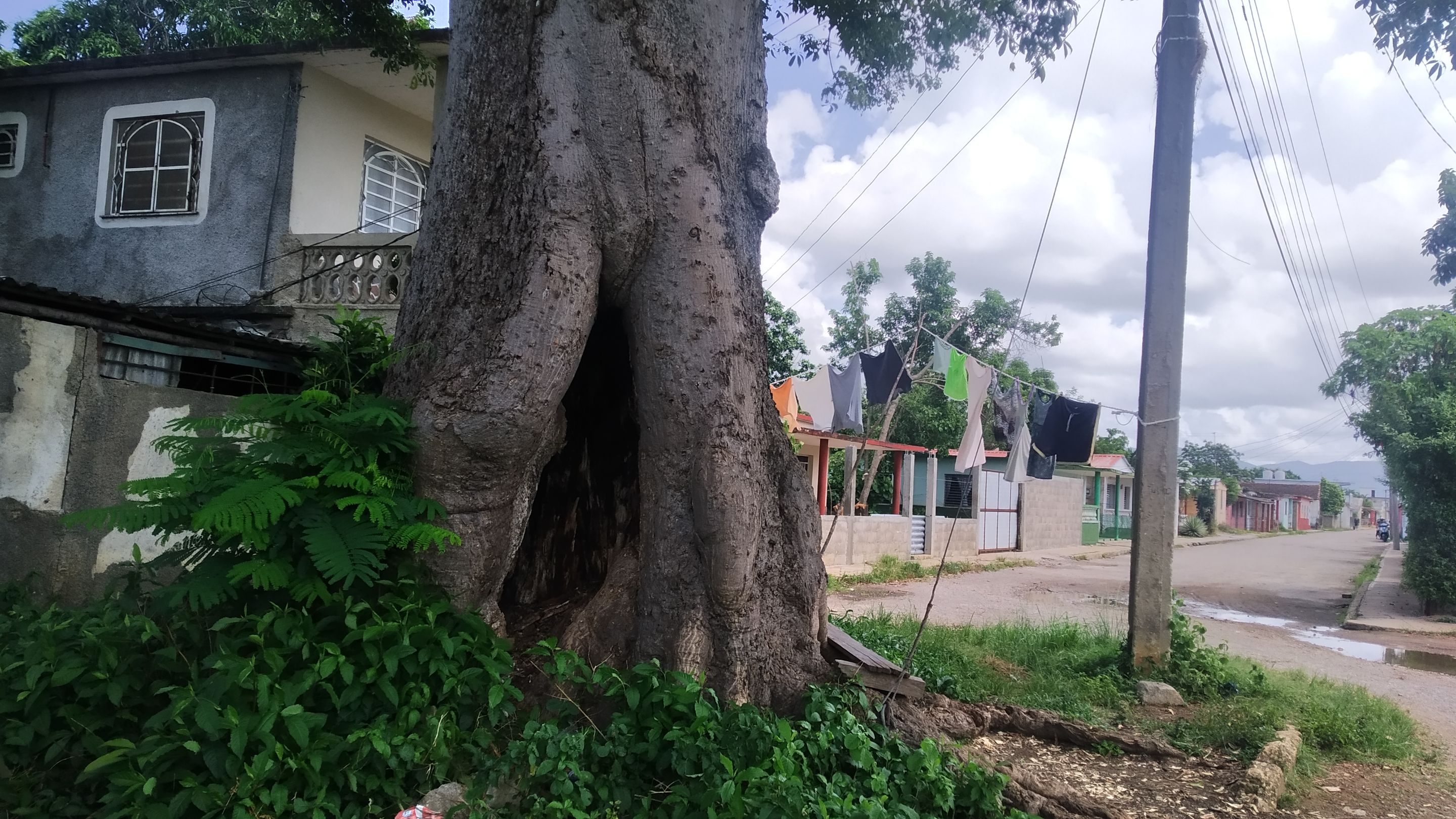 I was reading this book by the Cuban author Jesús Orta Ruíz, El Indio Naborí, and I found a reference to the Ceiba.
I was reading this book by the Cuban author Jesús Orta Ruíz, El Indio Naborí, and I found a reference to the Ceiba.

|

|
|---|
Here under this ceiba tree, the monteros smoked and told their tales of roads and corrals. Sometimes they spoke of love or they cracked jokes and laughed, while I -rider on a millet horse- listened with admiration. I can forget those scenes any day, except when it rains and the air smells of manure.That's it for my post today, and I hope you have learned more about Cuba. See you. --- All images are my property Translated and formatted with [Hive Translator](https://hivetranslator.com) by @noakmilo.